From left to right: Scott Van Hoy, Dr. Kristi Drexler, Olivia Turner and Luis Gonzalez pose in front of the Ocean First dive shop mural on the Jules campus before starting the mission. Image courtesy of Terry Trevino.
In January 2024, a crew consisting of three University students and one faculty member affiliated with the APUS Analog Research Group (AARG) stayed for 24 hours at Jules’ Undersea Lodge in Key Largo, Florida.
Settled in about 25 feet of water in a protected lagoon, Jules is the former research habitat for the Puerto Rico International Undersea Lab (PRINUL) program, which took place in the 1970s. Jules became an undersea hotel in 1986 and has recently become an underwater research facility helping researchers understand space life here on Earth.
The crew consisted of three University students – myself, Olivia Turner and Luis Gonzalez – as well as faculty member Dr. Kristi Drexler. During our time in Florida, we researched the impacts of living in hyperbaric environments and tested field equipment for future microgreens research. Also, we chatted with elementary, high school and university students about the value and experience of research on the ocean floor.
The History of Jules’ Undersea Lodge
In the 1970s, Jules was called “La Chalupa”. Funded by the government of Puerto Rico and the United States National Oceanic and Atmospheric Administration (NOAA), the facility was managed by the Marine Resources Development Foundation (MRDF). The purpose of the habitat was to support humans conducting undersea research on the continental shelf.
During 11 missions – some involving ocean dives as deep as 100 feet – 50 aquanauts lived in the habitat at various times. During their time at Jules’ Undersea Lodge, these aquanauts conducted marine biology, ecology and hyperbaric physiology research.
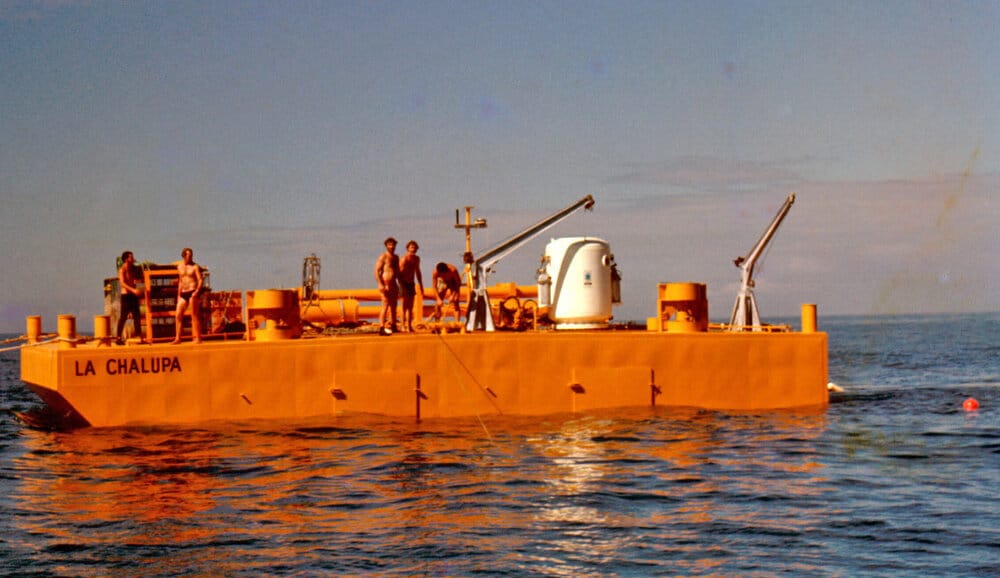
What Is an Aquanaut?
We are often asked, “What is an aquanaut?” An aquanaut is someone who has lived in an underwater habitat at ambient pressure for at least 24 hours.
During the space race in the 1960s and 1970s, there was a concurrent race to live in the water and explore the continental shelf. As technology improved and our understanding of how the body reacts under the pressure of living in the sea became more advanced, aquanauts who lived in Jules continued their experiments in human physiology and ocean exploration.
As the new space race matures, the use of undersea habitats is increasing in popularity because astronaut operations on Earth can be tested before those astronauts go to space. The National Aeronautics and Space Administration (NASA) frequently uses undersea environments such as the Aquarius Reef Base to test new operations, procedures, and technologies. When NASA sends astronauts to live underwater at Aquarius, they are not only considered astronauts, but also aquanauts.
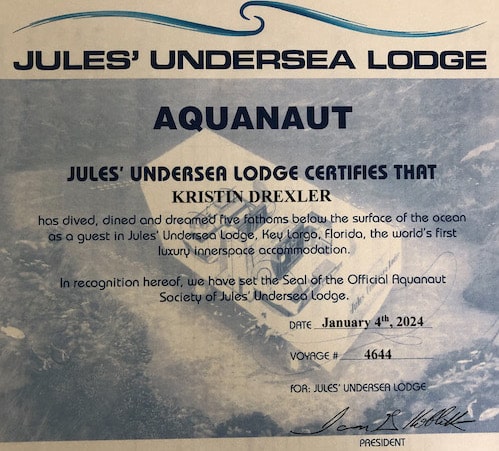
Living in Jules’ Undersea Lodge
Now, Jules is gaining more and more popularity as a facility where universities and citizen-scientists can study and learn about space operations.
In 2023, Florida researcher Dr. Joseph Dituri lived in Jules for 100 days, researching undersea medicine and conducting educational and public outreach events. In his interviews, he expressed how missions like the one at Jules are essential to understanding the complications of living in space.
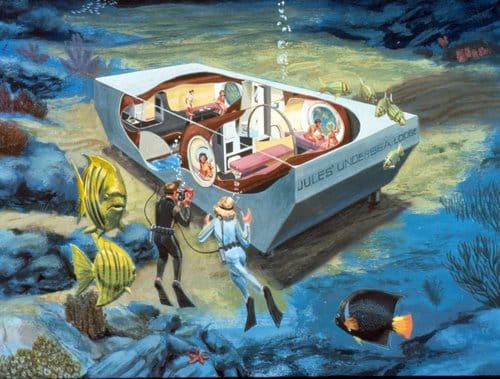
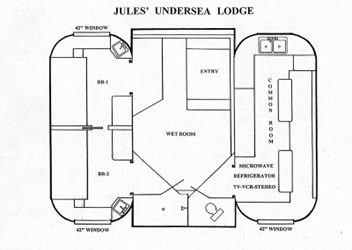
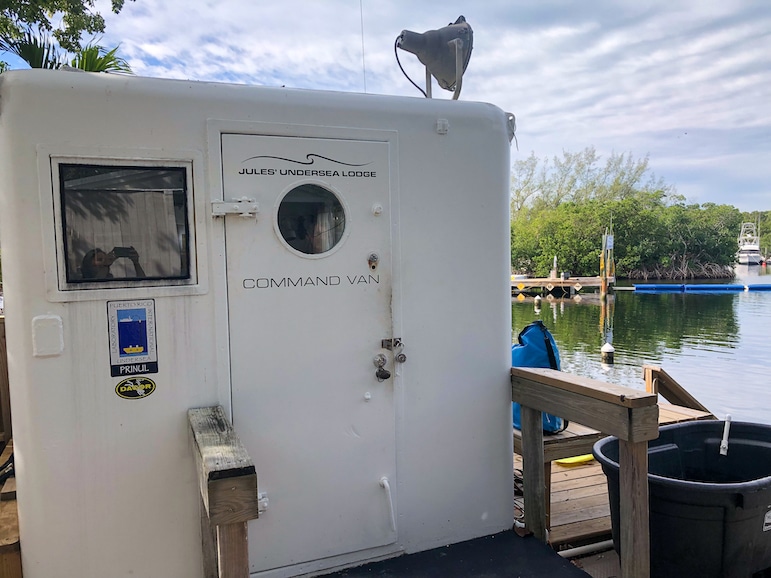
AARG’s PIRATE Mission at Jules’ Undersea Lodge
In 2022, AARG began collaborating with Aquarius Reef Base to open student research and education at underwater facilities. As preparation, student James Sheffield and I completed a week-long “Introduction to Saturation Diving” course at Aquarius Reef Base to kick off our involvement with the underwater research world. In 2023, we started discussions and collaborations with Jules’ Undersea Lodge.
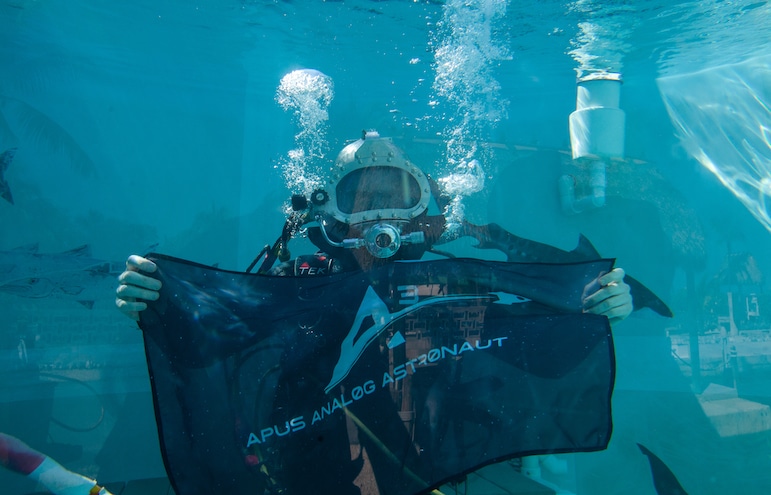
Our mission to Jules was called the “Paired In-situ Research Analog and Technology Evaluation” (PIRATE). During our 2024 trip, we also collaborated with the University of North Dakota (UND), where other space-related research has been performed.
After our first PIRATE mission, all of our crew officially became aquanauts. In addition, we collaborated with two UND students and one faculty member, who also earned their aquanaut title.

Research and Outreach Efforts
The purpose of visiting Jules’ Undersea Lodge was to conduct a pilot study titled “Venous Gas Emboli (VGE) Variability after Saturating at Jules’ Undersea Lodge.” Our VGE variability study used a portable subclavian ultrasound system called O’Dive to evaluate whether crew members experienced decompression stress after staying 24 hours inside Jules. The inside of Jules has about 60% more atmospheric pressure than what we experience at sea level on Earth.
When a diver transitions from a high-pressure to a low-pressure environment, venous gas emboli – tiny air bubbles in the blood – can form and cause mild to intense pain for a diver. Decompression sickness (also known as caisson disease or “the bends”) is positively correlated with the number and size of these bubbles in the blood. Even with the same dive profile, different divers experience the formation of these bubbles differently and have a different susceptibility to decompression sickness.
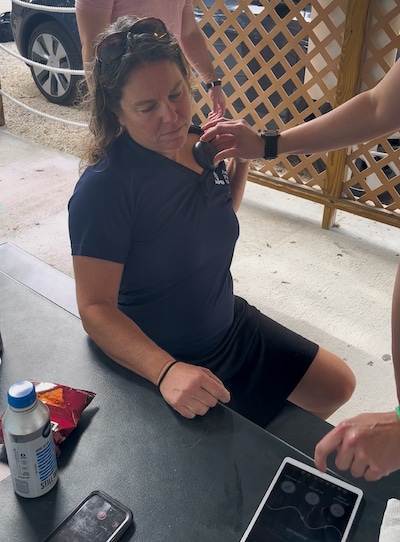
The pilot study we conducted during PIRATE checked for bubbles in each person’s blood after the dive and correlated those bubbles with specific health factors. This study ultimately provided information about the usability of the O’Dive system and preliminary data about how a more extensive study can be launched to determine why some people form bubbles in their veins more than others.
We also had live-stream videos for multiple audiences. Olivia spoke to three University student organizations (AIAA, wSTEM and AWIS) about her research on microgreens at another research facility, the Inflatable Lunar-Mars Analog Habitat (ILMAH). Olivia also showed how she tested equipment such as temperature loggers at Jules’ Undersea Lodge.
Kristi recorded a video for a fifth-grade class in California. We introduced those students to the Jules habitat and answered their experiential and research questions, such as:
- “How do you get inside Jules from the surface?”
- “How does being under water affect your health?”
- “What kinds of ocean species are you seeing?”
Also, Luis recorded several videos for a high school program for gifted students in Niceville, Florida, answering their questions and conducting demonstrations on dive physics. Both live-stream videos are available on the APUS Analog Research Group YouTube channel.
In addition, part-time faculty member and University alumnus Terry Trevino used the facilities at the Jules campus to collect data for an ongoing study. The Jules campus includes a dive shop and the Marine Resources Development Foundation.
Terry contracted with a dive charter to travel offshore and collect water samples to test for nanoplastics. In his study, “Impact of Nanoplastics on Phytoplankton Viability in the Plastocene Era: An Ecosystem at Risk,” Terry collected water samples from remote areas across the globe to test for the presence of nanoplastics to determine their impacts on phytoplankton and ecosystem health.
Living inside Jules’ Underwater Lodge
The PIRATE mission started with our preparation to dive to Jules. Although Jules is a short dive of only 25 feet, the chilly January water and low visibility made the dive to the habitat not to be underestimated. Visibility dropped to only a few feet near the habitat’s entrance all of us and the mission director disturbed silt during the dive, so we had to cautiously enter Jules’ Underwater Lodge.
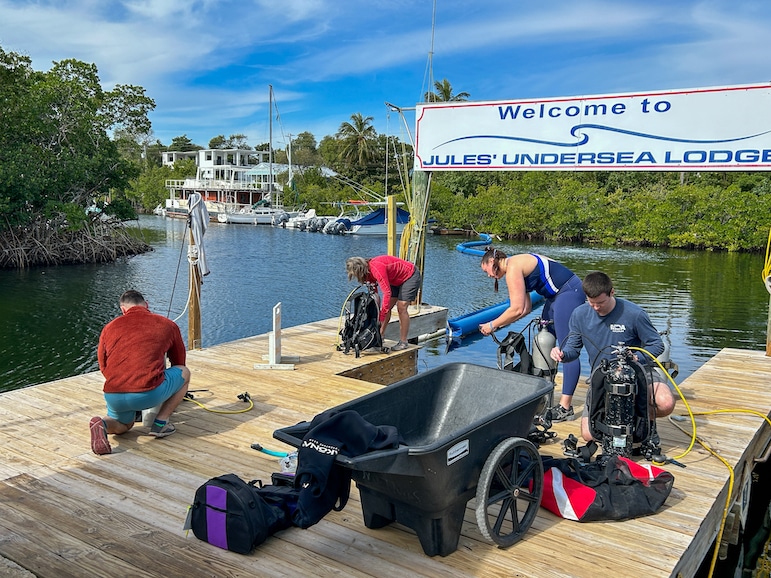
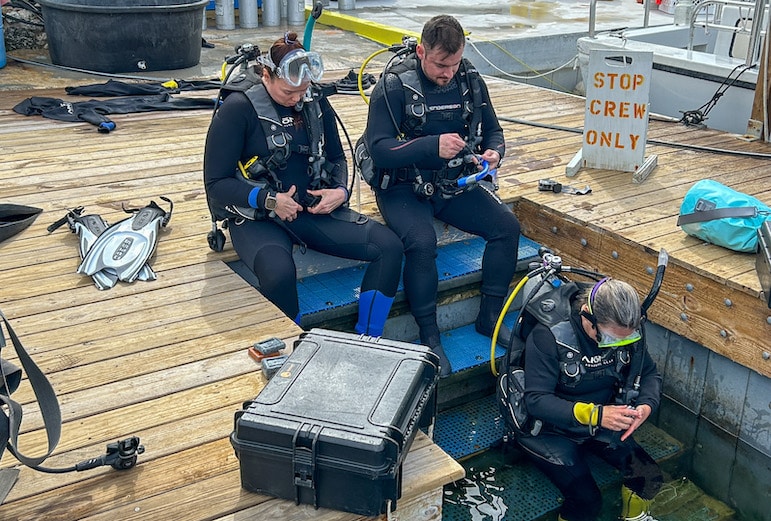
After we entered Jules, we were on a deadline to conduct our first live stream from Jules. Jules is close enough to the shore to be connected to high-speed internet, allowing for excellent outreach opportunities. As a result, we took full advantage of live-stream technology.
After the live stream, we took some time to unpack our personal items. All equipment brought down to Jules is carried in a dry box with a pressure relief valve that compensates for the pressure differences between the surface and the subsurface. With the difficult logistics of getting equipment to and from the habitat, we packed light.
It wasn’t long before it was time for dinner. Our crew started watching the documentary “My Octopus Teacher” on Netflix®. Later, the Jules mission director swam down with an unexpected treat: hot pizza.
Now that Jules’ Undersea Lodge is managed as an underwater hotel, it has some creature comforts that it did not have back when it was solely a research facility. Today, you can find hand-painted mermaid tables, fish-themed throw pillows and an array of snacks for guests.

However, the PIRATE crew wasn’t at Jules for a holiday. After dinner, we conducted our second live stream with student groups at the University. We shared our research and experiences, as well as answering questions about undersea living and how it related to living in space.
Once the sun set and the live streams were completed, we geared up for an excursion dive. An excursion dive is like a normal scuba dive, except it begins and ends at the underwater habitat. The purpose of this dive was to fulfill the requirements of the Professional Association of Diving Instructors (PADI) aquanaut certification and to observe bioluminescent organisms in the surrounding water.
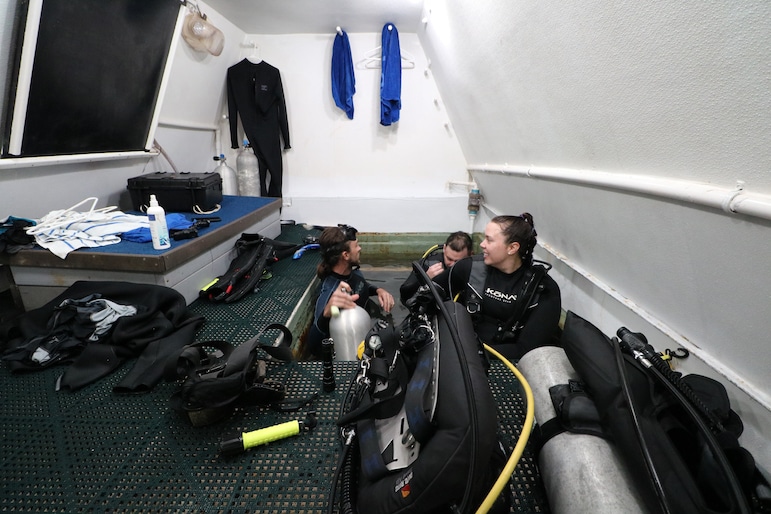
The night ended with a crew debrief; we discussed lessons learned from the first day’s operations and made plans for day two. Then, we settled into bed and woke up bright and early the next morning to begin recording additional outreach videos.


With the morning dedicated to video making, time flew by. By the afternoon, we hit our 24-hour mark underwater. We stripped our beds, packed our belongings and donned our gear to leave Jules’ Underwater Lodge.

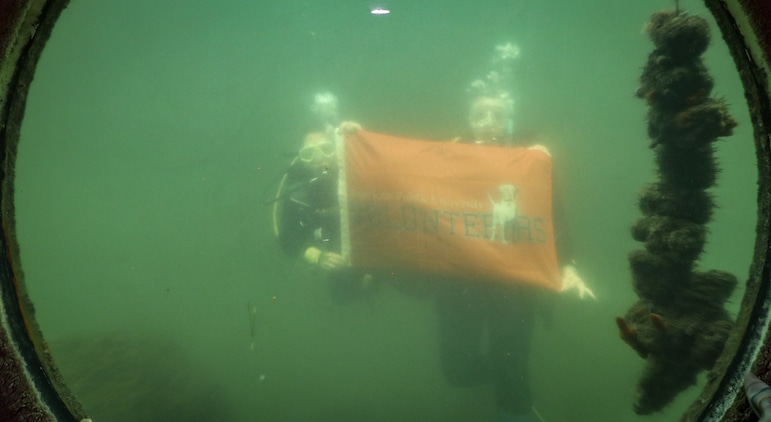
Once we were safe on shore, we conducted measurements for our VGE research, cleaned up our gear and shared the lessons learned about our experiences the University of North Dakota (UND) team. UND Human Spaceflight Laboratory researchers conducted a 24-hour mission on the following day, and we aided with the setup of their telecommunication project.
The UND team also participated in the VGE research study conducted by our University, making PIRATE an excellent collaboration and mutually beneficial project between the two universities’ space studies programs.
The Future of Undersea Space Analog Research
For the first time in several decades, the future appears bright for undersea living. Projects such as the Deep Ocean Research Project and PROTEUS® are just two large-scale plans that are looking to take undersea living to the next level by creating the “International Space Station of the Sea.”
However, more research is still needed to go further into the oceans and space. AARG members continue to seek ways to use Jules’ Undersea Lodge and Aquarius Reef Base for space-related research and education and we’re excited to see where the next space and ocean research and exploration phase will take us.
Get Involved with AARG
If you are a University student or faculty member and interested in learning more about AARG, visit the AARG website or send an email with your interest to apus.arg@gmail.com.
Netflix is a registered trademark of Netflix, Inc.
PROTEUS is a registered trademark of Proteus Ocean Group, Ltd.

Comments are closed.